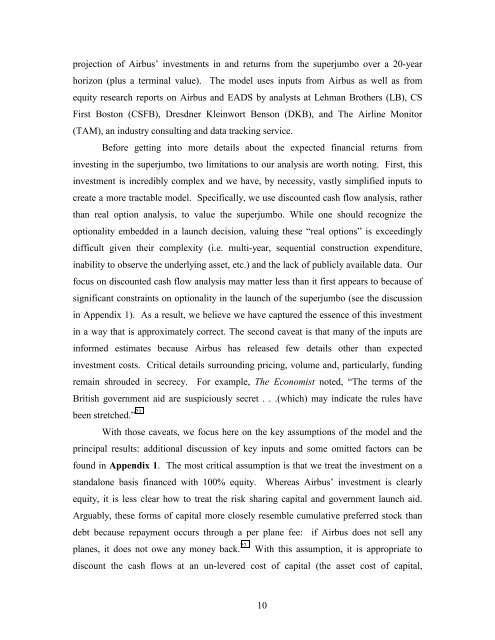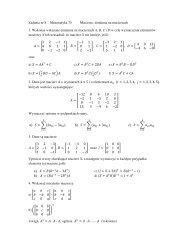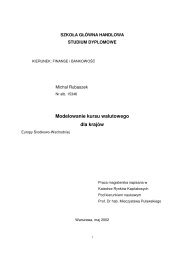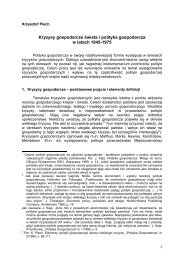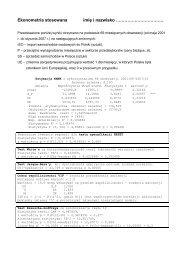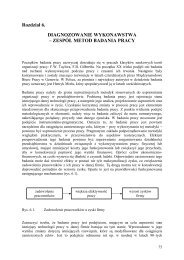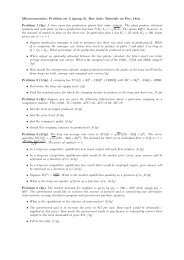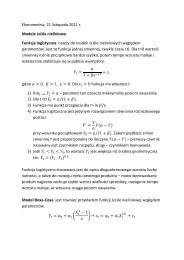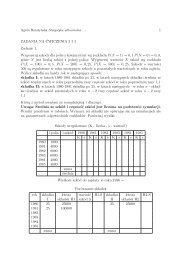“Airbus vs. Boeing in Super Jumbos: A Case of Failed Preemptionâ€Â
“Airbus vs. Boeing in Super Jumbos: A Case of Failed Preemptionâ€Â
“Airbus vs. Boeing in Super Jumbos: A Case of Failed Preemptionâ€Â
You also want an ePaper? Increase the reach of your titles
YUMPU automatically turns print PDFs into web optimized ePapers that Google loves.
projection <strong>of</strong> Airbus’ <strong>in</strong>vestments <strong>in</strong> and returns from the superjumbo over a 20-yearhorizon (plus a term<strong>in</strong>al value). The model uses <strong>in</strong>puts from Airbus as well as fromequity research reports on Airbus and EADS by analysts at Lehman Brothers (LB), CSFirst Boston (CSFB), Dresdner Kle<strong>in</strong>wort Benson (DKB), and The Airl<strong>in</strong>e Monitor(TAM), an <strong>in</strong>dustry consult<strong>in</strong>g and data track<strong>in</strong>g service.Before gett<strong>in</strong>g <strong>in</strong>to more details about the expected f<strong>in</strong>ancial returns from<strong>in</strong>vest<strong>in</strong>g <strong>in</strong> the superjumbo, two limitations to our analysis are worth not<strong>in</strong>g. First, this<strong>in</strong>vestment is <strong>in</strong>credibly complex and we have, by necessity, vastly simplified <strong>in</strong>puts tocreate a more tractable model. Specifically, we use discounted cash flow analysis, ratherthan real option analysis, to value the superjumbo. While one should recognize theoptionality embedded <strong>in</strong> a launch decision, valu<strong>in</strong>g these “real options” is exceed<strong>in</strong>glydifficult given their complexity (i.e. multi-year, sequential construction expenditure,<strong>in</strong>ability to observe the underly<strong>in</strong>g asset, etc.) and the lack <strong>of</strong> publicly available data. Ourfocus on discounted cash flow analysis may matter less than it first appears to because <strong>of</strong>significant constra<strong>in</strong>ts on optionality <strong>in</strong> the launch <strong>of</strong> the superjumbo (see the discussion<strong>in</strong> Appendix 1). As a result, we believe we have captured the essence <strong>of</strong> this <strong>in</strong>vestment<strong>in</strong> a way that is approximately correct. The second caveat is that many <strong>of</strong> the <strong>in</strong>puts are<strong>in</strong>formed estimates because Airbus has released few details other than expected<strong>in</strong>vestment costs. Critical details surround<strong>in</strong>g pric<strong>in</strong>g, volume and, particularly, fund<strong>in</strong>grema<strong>in</strong> shrouded <strong>in</strong> secrecy. For example, The Economist noted, “The terms <strong>of</strong> theBritish government aid are suspiciously secret . . .(which) may <strong>in</strong>dicate the rules havebeen stretched.” 21With those caveats, we focus here on the key assumptions <strong>of</strong> the model and thepr<strong>in</strong>cipal results: additional discussion <strong>of</strong> key <strong>in</strong>puts and some omitted factors can befound <strong>in</strong> Appendix 1. The most critical assumption is that we treat the <strong>in</strong>vestment on astandalone basis f<strong>in</strong>anced with 100% equity. Whereas Airbus’ <strong>in</strong>vestment is clearlyequity, it is less clear how to treat the risk shar<strong>in</strong>g capital and government launch aid.Arguably, these forms <strong>of</strong> capital more closely resemble cumulative preferred stock thandebt because repayment occurs through a per plane fee: if Airbus does not sell anyplanes, it does not owe any money back. 22 With this assumption, it is appropriate todiscount the cash flows at an un-levered cost <strong>of</strong> capital (the asset cost <strong>of</strong> capital,10


